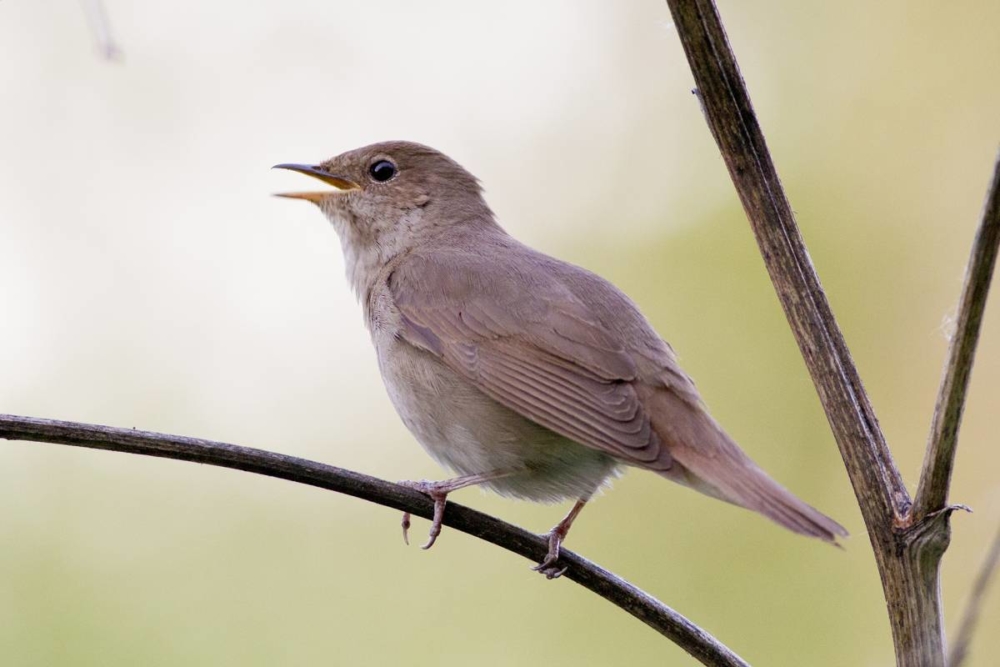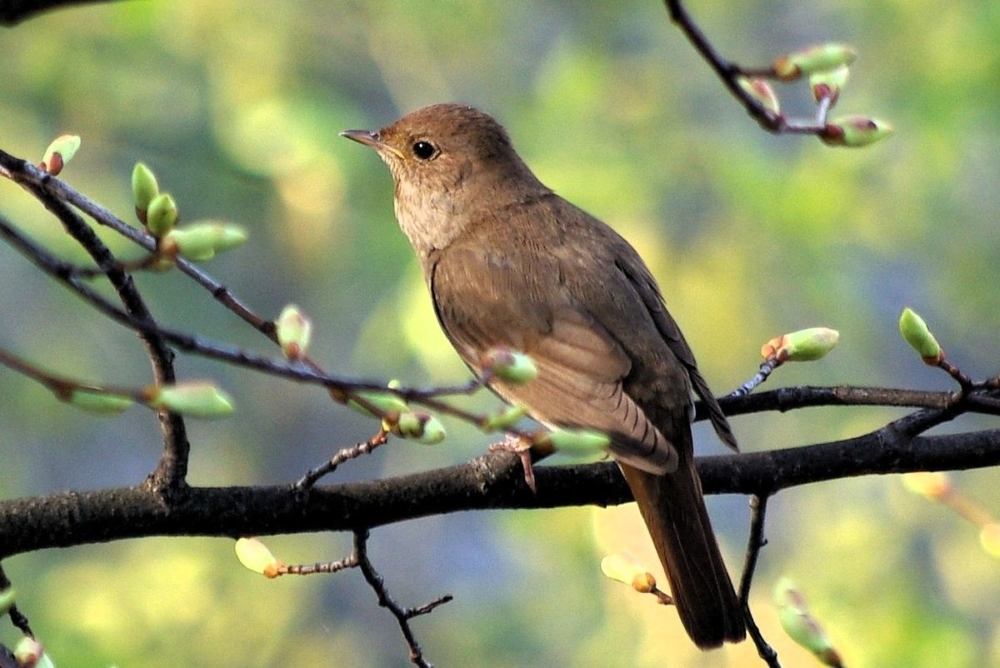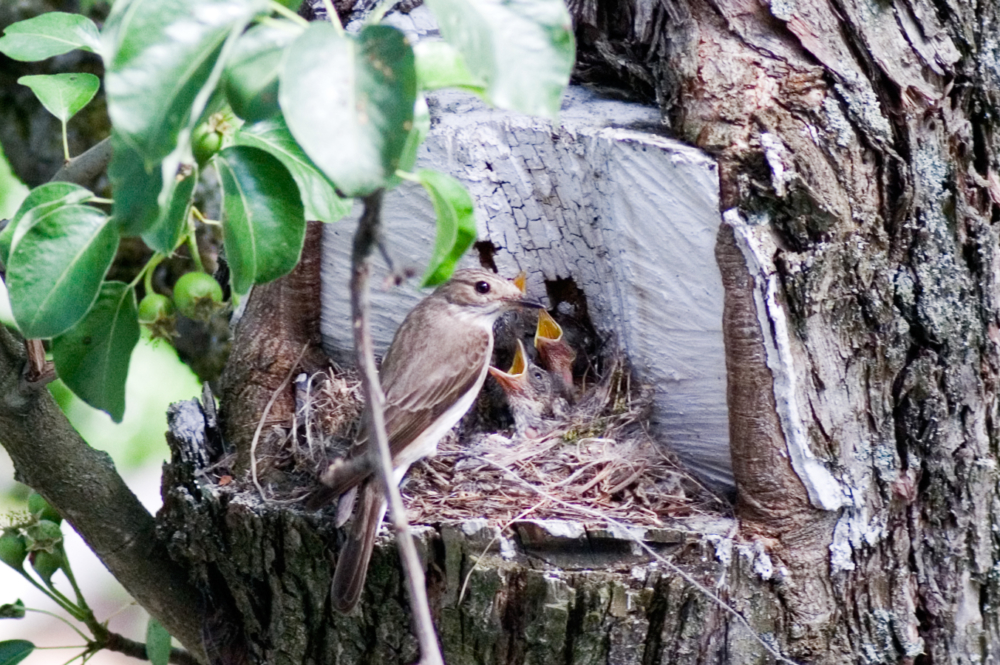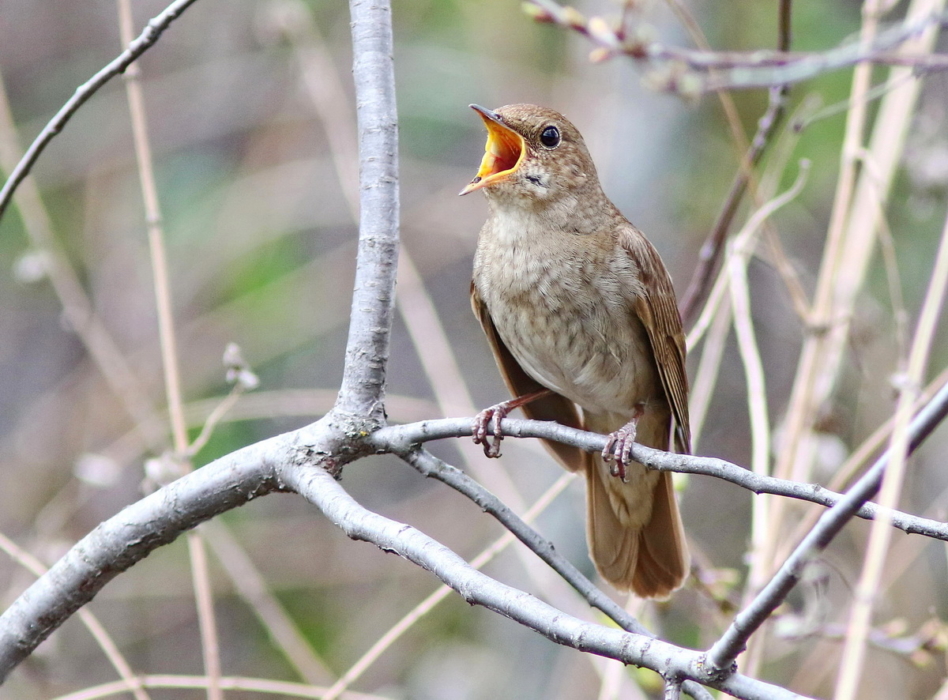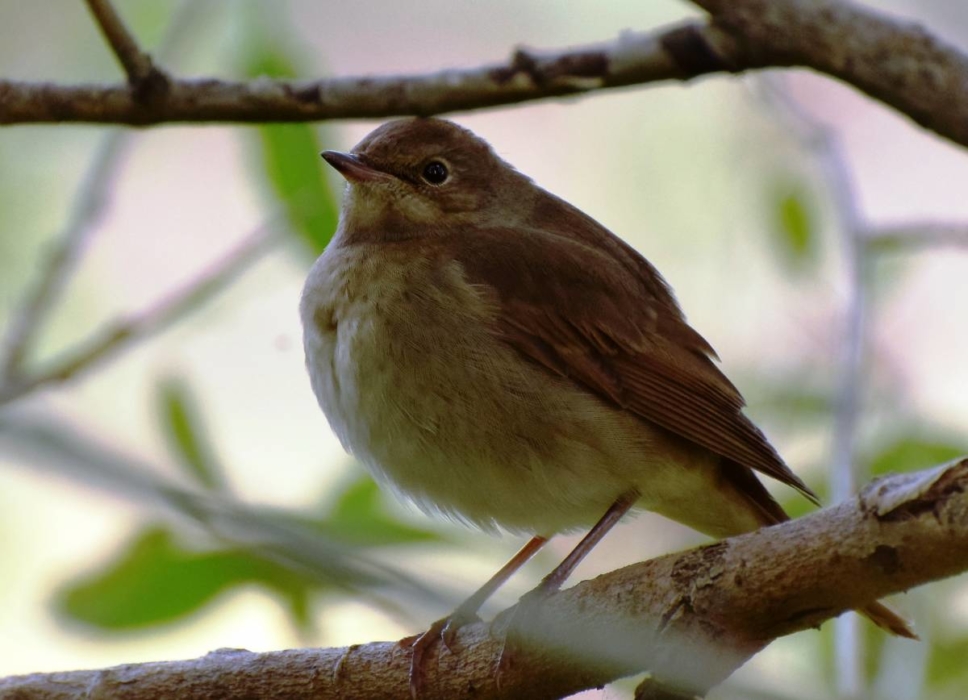How often at dawn you can hear the amazing singing of a small bird. An ordinary nightingale is a morning bird, which formally belongs to the blackbird family. It is often mistaken for a robin, as they are almost the same size and have a similar color.
Material Content:
Description and features of the bird
Scientists believe that this bird was known 1000 years ago. Translated from Anglo-Saxon, “nightingale” means “night singer”. He got his name because he sings both at night and during the day. However, it is believed that at night only unpaired males sing, thus trying to attract the attention of females. In Latin, the name of the bird sounds like “luscinia”.
And others believe that the name “nightingale” comes from the word “salt”, which means a reddish-yellowish-brown color. This is the shade of plumage in birds.
These are little birds. On average, the size of a nightingale does not exceed 15-16 cm in height. The description of the species should be focused on its color: feathers covering the body of the bird are mainly brown, but the tail on one side is colored red.
Natural habitat
Eastern nightingale lives in European, Asian dense forests and woodlands, excluding only those located in the far north. Despite the fact that there are a huge number of them in the natural habitat, this small bird is very difficult to detect. Soloviev can be easily heard by loud singing, but very often they hide in dense foliage out of sight.
A nightingale is a migratory bird. Every year he overcomes great distances.In summer, it flies to Europe and Asia to breed offspring, and in winter it migrates to the warm countries of Africa.
Nightingale ration
These are omnivores. The nightingale's main foods are fruits, nuts, seeds, and some insects. Under natural conditions, the bird is food for a large number of predators. This is due to its small size. Enemies of the Nightingale:
- rats,
- foxes,
- cats
- large lizards,
- snakes.
In addition, birds of prey are dangerous to him.
Breeding and offspring
Nightingales begin to mate in the spring. The female builds a nest in dense thickets. The nightingale's nest is cup-shaped and is located near the ground. It is well hidden from the outside world and consists of branches, foliage, grass.
A female nightingale lays on average 2 to 5 eggs of olive or brown-olive color. Chicks of a feathered creature are born in just 14 days. Both parents feed them.
Home Content
Recently, nightingales began to be kept at home. He can live in captivity, but he needs careful care. He sings very well in a cage, sometimes even better than in the wild. However, for this he needs to create good conditions.
The nightingale cage can be medium or large, and the top should be soft. Its size should not be less than 0.6x0.3x0.4 m. At night, experts recommend covering the cage with cloth on the side from which the light from the street lamp falls. Such an action will help make the bird calmer.
It will take some time for the nightingale to get used to home conditions. As a result, you can get a hand bird.
Each cage should be equipped with a drinking bowl, feeder, and a clean sand tray. Instead of ordinary poles, it is better for him to put real twigs in the "home". Since this is a very shy bird, so at the very beginning it is better for her to bandage her wings. This will give the representative of the birds time to calm down and not cripple themselves. In the first days after planting in a cage, it is better to cover the latter with a light cloth and do not disturb the nightingale once again.
Important! With proper care, the bird will quickly get used to the new place and begin to sing in the first 10 days after landing in a cage.
The nightingale's diet consists of flies, larvae, and locusts. Typically, such food can be purchased at any pet store. Such a bird will not refuse finely chopped lettuce, cabbage, needles and sprouted grains. Nightingale needs to be fed at least 3 times a day.
The owner of the bird should remember that in a small cage it has limited movement, so metabolism may be impaired. As a result, obesity and shortness of breath appear. To help the bird, it is necessary to exclude meat components and give preference to green vitamins and feeds.
Nightingale singing
It is the males who are known for their singing. Even some human singers are admirably called "nightingales." The song of the bird is very loud with characteristic whistles, trills and gurgling sounds. Their melody can be divided into several knees. Experts note that some males use 13 tribes in their song, but for the rest of the individuals, only 8-10 are typical.
Nightingale singing is heard well in the evening, since at that time other birds had not yet begun their concert. Scientists say that males most often sing without a pair at night. Thus, they wish to attract their future partner. An hour before dawn, the bird sings in order to protect its territory from strangers.
Do you know? It is because of the characteristic night singing in many languages that the word "night" is present in the name of the bird.
According to studies, nightingales sing much louder in urban environments. So they try to overcome the background noise of megacities.
Life span
The average life span of a nightingale is about 2 years. However, it is known that some individuals (especially those that are in captivity) live much longer.
Interesting Songbird Facts
Specialists highlight such unusual facts about nightingales:
- Females are slightly smaller than males.
- The bird has a brown plumage - a reddish tail and whitish-gray stripes on the lower chest. Male and female look the same.
- They have a pointed beak, a small, vertically arranged body and long legs.
- Nightingale is omnivorous. Its menu is based on fruits, seeds and insects.
- The bird begins to sing 3-5 days after arrival.
- If the conditions are favorable, and nothing has changed during the winter, then the songbird will return to the same place for several years.
- The nightingale is a small, secretive bird. It is rarely seen in the wild, because most of the time he spends in dense thickets.
- The bird stops singing in the first half of July.
- Nesting nightingale pairs are located at a distance of 50-100 m from each other.
- The migratory bird spends the winter in the dry savannahs of sub-Saharan Africa.
- Nightingale is a solitary bird out of breeding season.
- He is also known for his romantic melodic songs, which can be heard both day and night. The nightingale sings extremely diverse and complex melodies, which are composed of more than 200 different phrases.
- The songs of this bird served as inspiration for many famous musicians (Beethoven and Tchaikovsky), writers (Homer, Sophocles, William Shakespeare and John Keats) and even philosophers (Aristotle).
- Only males sing. The main purpose of singing is to attract females during the mating season. Melodious songs cannot be heard during the nesting period (because they will inform the predators of the location of the nest). They are usually replaced by small twittering and frog alarming calls when the nightingale finds predators near the nest.
- Both parents take care and feed their chicks until they are ready to fend for themselves. Chicks spend the first 10-12 days in the nest. They learn to fly 3-5 days after leaving home. After 2-4 weeks, the young nightingales are ready for an independent life.
- Nightingale is a national bird of Iran.
- They arrive at the nesting site in the second half of April or the first half of May. Usually their arrival is invisible, as birds appear at night.
- Nightingales fly off very secretively. Scientists have determined that the first birds of this species travel to warmer climes in mid-August.
- The maximum age of nightingale recorded by researchers was 8 years and 10 months.
Nightingale is a truly amazing bird. His songs can only be compared with the famous compositions of world classical composers. Each singer is pleased to hear praise from his fans that he sings like a nightingale. This bird pleases not only the generation of modern people, but also delighted their ancestors for over 1000 years. Therefore, the safety of this species should be in the first place for every lover of wildlife.


